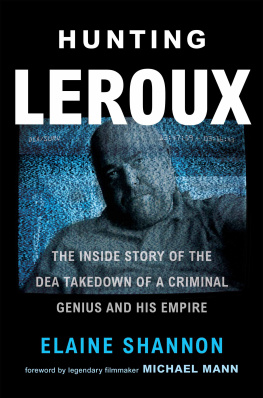Praise for
Swimming in the Volcano:
A stunning tour de force ... In some of the most brilliantly sinuous and seductive prose being written today, Shacochis summons the spirits of guilt and innocence, of love and hate, of white and black, [and] of America and the Third World.
Newsday (New York)
Swimming in the Volcano is sharp, fluid storytelling ... [with] scenes of harsh power and immense range.... Shacochis has created an absorbing group of protagonists, and ... remarkable language [that] maintains the highest level of emotional melodrama amid an ever-thickening backdrop of political implication.
San Francisco Chronicle
Big, lush ... rich ... Swimming in the Volcano is a mural, a tapestry, a gallery. Shacochis projects a series of nightmarish, psychotropic, fatally beautiful impressions, [creating] an indelible impression of the state of mind that is St. Catherine.
San Diego Union Tribune
A dark novel reminiscent of Nostromo in its meditations on how the innocent become swept up in political foment, and of Faulkner in its rolling sentence structures that continually wrestle with contradictions.
Booklist
Shacochis proves himself to be the rarest of contemporary American novelists, a writer with a worldview.... Swimming in the Volcano is a reminder of literatures finest affirmation: that life itself is an exotic journey, a trip to an unknown island, a one-way ticket to the hearts interior.
Conde Nast Traveler
Also by Bob Shacochis
EASY IN THE ISLANDS
THE NEXT NEW WORLD
DOMESTICITY
THE IMMACULATE INVASION
SWIMMING IN THE VOLCANO
A NOVEL
Bob Shacochis

Copyright 1993 by Bob Shacochis
All rights reserved. No part of this book may be reproduced in any form or by any electronic or mechanical means, including information storage and retrieval systems, without permission in writing from the publisher, except by a reviewer, who may quote brief passages in a review. Any members of educational institutions wishing to photocopy part or all of the work for classroom use, or publishers who would like to obtain permission to include the work in an anthology, should send their inquiries to Grove/Atlantic, Inc., 841 Broadway, New York, NY 10003.
Printed in the United States of America
Published simultaneously in Canada
First published in 1993 in the United States by Charles Scribners Sons and in Canada by Maxwell Macmillan Canada, Inc.
Printed by special arrangement with Simon & Schuster.
Excerpts from the following work have appeared in Intro, Vogue, GQ, Outside, and Clockwatch Review.
The author wishes to express his gratitude to the Florida Arts Council and the American Academy and Institute of Arts and Letters for their generous and timely support.
The author gratefully acknowledges permission to reprint excerpts from the following works:
Heather McHugh, Have or Love and The Ghost from To the Quick, copyright 1987 by Heather McHugh.
Julian Evans, Transit of Venus: Travels in the Pacific, copyright 1992 by Julian Evans. Reprinted by permission of Pantheon Books.
The Never-Ending by Andrew Hudgins. Copyright 1991 by Andrew Hudgins. Reprinted by permission of Houghton Mifflin Co. All rights reserved.
This is a work of fiction. Names, characters, places, and incidents either are the product of the authors
imagination or are used fictitiously. Any resemblance to actual events or persons, living or dead, is entirely
coincidental.
Library of Congress Cataloging-in-Publication
Shacochis, Bob.
Swimming in the volcano: a novel/Bob Shacochis.
p. cm.
eBook ISBN-13: 978-0-8021-9931-7
1. AmericansCaribbean AreaFiction. 2. Caribbean AreaFiction. I. Title.
PS3569.H284S94 2004
813.54dc22 2003067576
Grove Press
841 Broadway
New York, NY 10003
Authors Note
The trilevel presentation of an imaginary West Indian dialect (provincial, standardized provincial, standard) is an intentionaland, the writer hopes, comprehensibleact of bridging between popular and conventional usage.
SWIMMING IN THE VOLCANO
Prologue
September 1976
On the northern end of the Caribbean island of St. Catherine, there is an active volcano, Mount Soufrire. Dormant since its last eruption in 1902, its massive crater had collected a brown hot lake of tropical rains, and magma formed a fiery island within the lake in a gradual reawakening not many years ago. La Soufrire, as if aware of her accelerating metamorphosis from beauty to beast, had been increasingly moody, an unpredictable and worrisome neighbor to the islands citizens. The government of St. Catherine responded by establishing a monitoring station, and the Ministry of Agriculture was prompted to send a man up Soufrire, the forest ranger Godfred Ballantyne, on a weekly basis to check the equipment housed on the volcanos rim.
Several months after the American economist Mitchell Wilson had been assigned to the ministry, he expressed an interest in seeing the volcano himself, and the chief agricultural officer arranged for Ballantyne to take the American up the mountain with him.
From the outskirts of Queenstown, the capital at the bottom of the island, they drove recklessly northward for over thirty miles, the Land Rover straining on a broken roadway of switchbacks and climbs, the flank of the volcano and its cloud-smothered peak sometimes in sight, rising glorious from the monotonous spread of jungle and surrounded by her court, the lesser mountains of the north. They stopped once, flagged to the roadside at Camell by apologetic national police, confident men, vain in their uniforms, leopard fatigues and burgundy berets. Their papers were examined and returned by the officer in charge, who joked with the forest ranger Ballantyne, talking to him as if he were a medical doctor assigned La Soufrire as a patient, and acknowledged his white passenger with a perfunctory salute.
Two hours out from the city, they turned inland until the dirt road they bounced over ended in a breezy plantation of coconut palms. Wheel tracks flattened the underbrush ahead, two pale compressed lines that burrowed from sight within yards, and Ballantyne downshifted into their channel and drove ahead until the right front wheel slammed into an unseen hole. Wilsons hand flew up to keep himself from banging into the windshield.
Ahlright, Ballantyne said, and decisively set the emergency brake on the incline. Even after he had removed the key and pocketed it, the engine continued to stutter before it died with a pop. The fumes of the overheated engine filled the cab of the Rover, stinging Wilsons eyes and increasing the nausea he felt from the ride which was like being on a rowboat in open water. Ballantyne laid a hand on the white mans shoulder. When he realized the hand had no message to deliver, Wilson looked at it sideways, puzzled.
Ballantyne was an iron-muscled man, not large but stoutly built, possessing a rugger players body best suited for pushing through walls of opponents. He leaned across the seat to make a show of scrutinizing the shoes on Wilsons feet. Then the ranger took his hand away and sat back, one thick arm draped on the steering wheel, still looking at Wilson, sizing him up, the white man becoming embarrassed by the close attention paid him, Ballantynes sober eyes so clearly focused on his basic worth.
What are we doing?
You cy-ahn run? the ranger asked plainly. He glanced at his gold wristwatch.
Next page
















